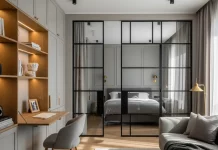The Bauhaus movement, celebrated for its groundbreaking contributions to art, architecture, and design, is often synonymous with clean lines, minimalism, and functionality. Yet, its furniture designs—some of the most revolutionary artifacts of the 20th century—are frequently overlooked. While household names like Marcel Breuer and Ludwig Mies van der Rohe claim much of the spotlight, a wealth of forgotten Bauhaus furniture pieces quietly shaped modern interiors in remarkable ways.
A New Philosophy in Furniture Design
At the heart of Bauhaus furniture design was a radical departure from the past. The movement sought to break free from the ornamental excesses of previous eras, embracing simplicity and practicality. Bauhaus designers viewed furniture not just as decorative objects but as functional tools for modern living. This philosophy extended beyond aesthetics to include considerations of mass production, affordability, and versatility—concepts that were revolutionary for their time.
Overlooked Masters and Their Contributions
Many Bauhaus designers have faded into obscurity despite their pivotal roles in redefining furniture design. Take, for instance, the works of Erich Dieckmann (German Wikipedia). Known for his innovative approach to modular furniture, Dieckmann’s wooden chairs and tables blended geometric precision with ergonomic comfort. His designs, often overshadowed by Breuer’s steel tube creations, were precursors to modern flat-pack furniture.
Another unsung hero is Lilly Reich. Collaborating closely with Mies van der Rohe, Reich’s influence can be seen in the iconic Barcelona chair. However, her independent designs, such as her pioneering work in exhibition furniture, deserve equal recognition. Reich’s mastery of materials like leather and steel set a new standard for luxury and durability in furniture design.
Forgotten Icons of Bauhaus Furniture
Among the forgotten pieces of Bauhaus furniture, several stand out for their ingenuity and impact:
- Josef Albers’ Nesting Tables
Albers is better known for his work in color theory, but his set of brightly colored nesting tables is a testament to Bauhaus principles. The tables combine bold primary colors with a practical design, exemplifying the movement’s blend of art and utility. - Hannes Meyer’s Workspace Furniture
As the second director of the Bauhaus, Meyer emphasized designs tailored to the needs of everyday people. His minimalist desks and storage units, designed for efficiency and adaptability, are prototypes of modern office furniture. - The Kandem Table Lamp
A collaboration between Marianne Brandt and Hin Bredendieck, this lamp exemplifies functional elegance. Its streamlined design and adjustable features became a blueprint for contemporary task lighting.
Blending Utility and Aesthetics
Bauhaus furniture wasn’t just about function; it was also about creating harmony between people and their surroundings. Designers focused on human-centered details—from the curve of a chair’s backrest to the height of a table—to enhance comfort and usability. These considerations were revolutionary at a time when furniture was often more decorative than practical.
For example, the tubular steel chairs by Breuer were not only lightweight and stackable but also visually striking, transforming how people thought about seating. The same could be said of Alma Siedhoff-Buscher’s children’s furniture, which combined playfulness with functionality, creating spaces that inspired creativity.
Legacy and Relevance Today
While many Bauhaus furniture designs remain timeless, some of the lesser-known pieces offer valuable lessons for today’s designers. The movement’s emphasis on simplicity, adaptability, and user-focused design continues to influence modern interiors. As sustainable and modular furniture grows in popularity, the Bauhaus vision feels more relevant than ever.
Revisiting these forgotten designs not only enriches our understanding of the Bauhaus but also highlights its enduring impact. By blending utility with aesthetics, these pieces laid the foundation for the spaces we live and work in today. Perhaps it’s time to give these unsung heroes of design the recognition they deserve.
Listen now to our podcast episode where we discuss the forgotten history of Bauhaus furniture design. Feel free to browse WE AND THE COLOR’s Interior and Product Design categories for more.
Subscribe to our newsletter!

















